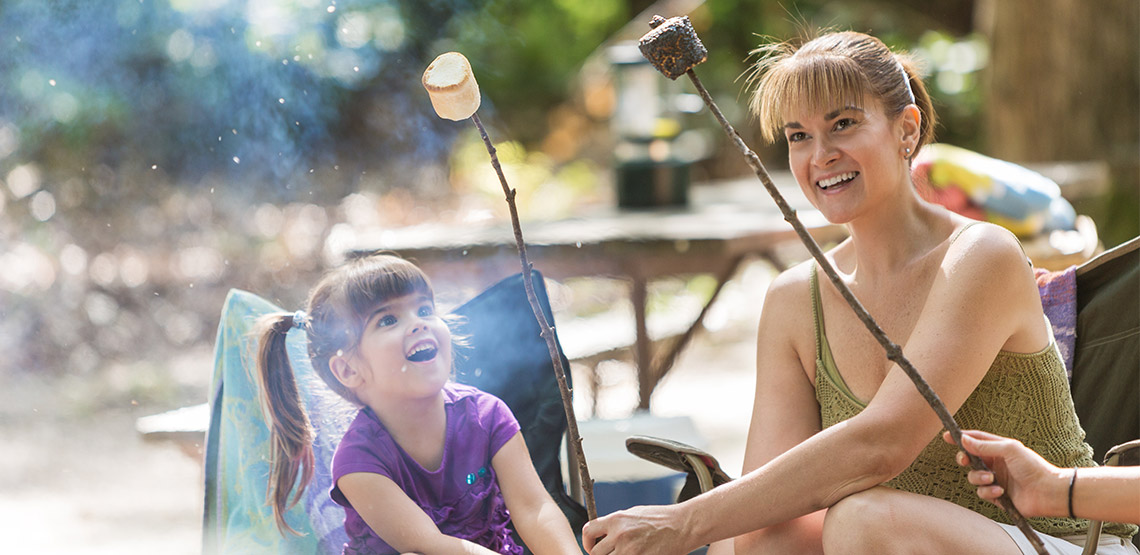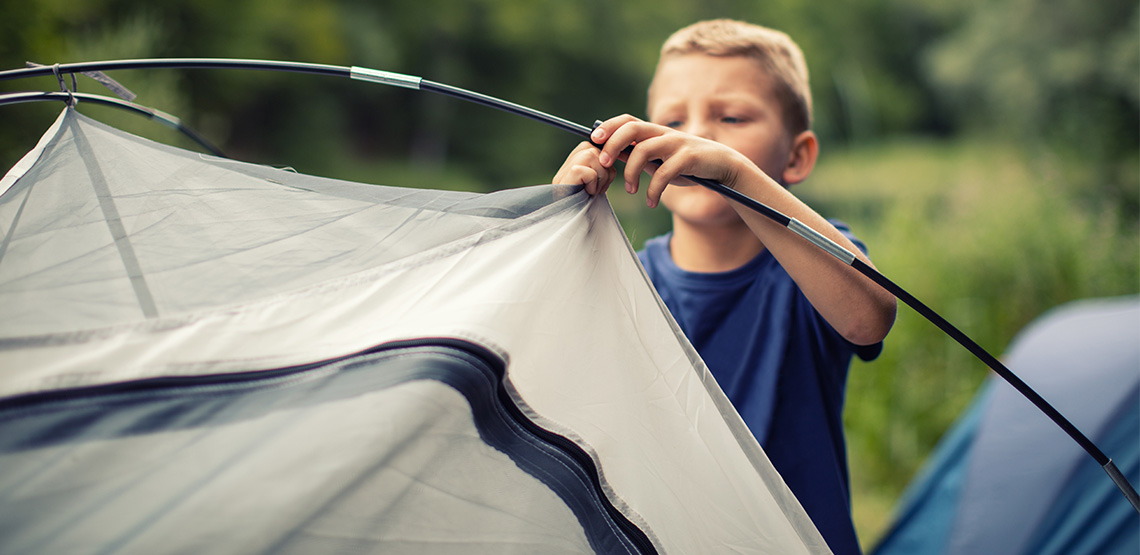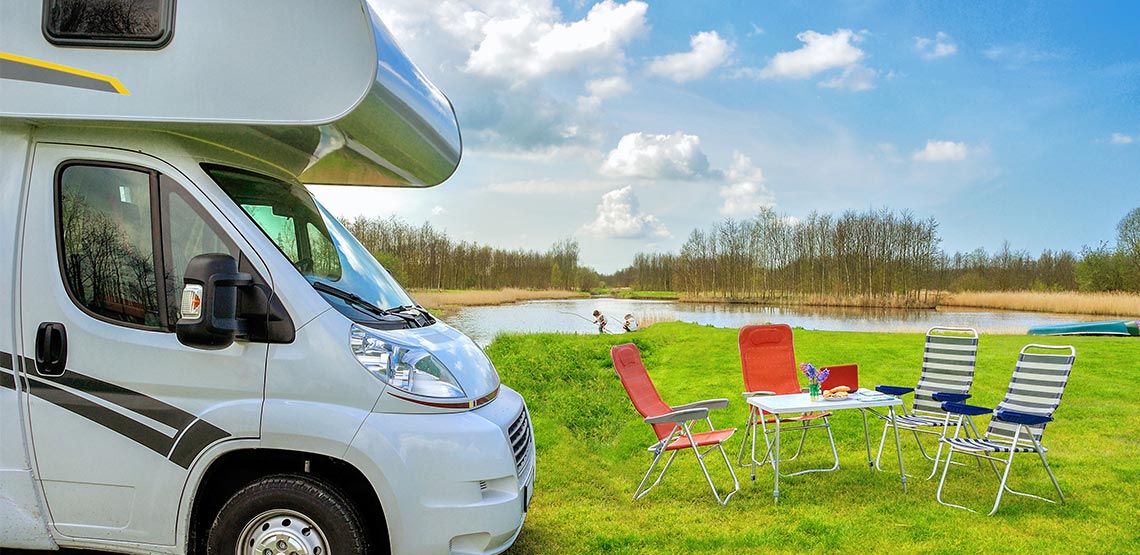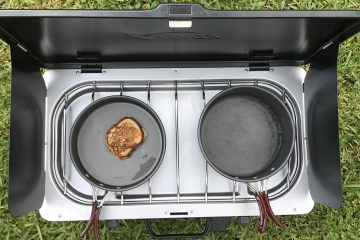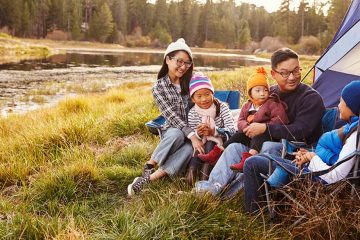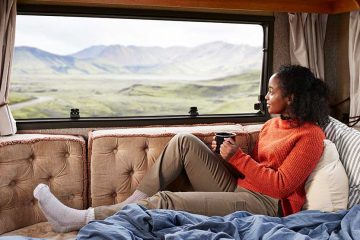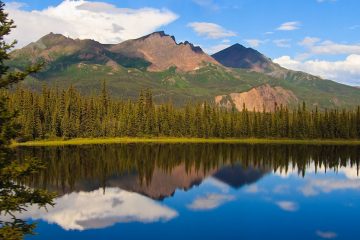Starry Skies & Crackling Campfires Await with This Guide to Planning a Camping Trip
Enjoy S’mores and the Outdoors
Even self-professed city slickers have to admit that lying under the stars at night is a beautiful experience. Camping is a fabulous way of reconnecting with the great outdoors — seeing night skies untainted by city lights, hearing nothing but wind in the treetops, and smelling only greenery and wilderness.
To make your camping trip a blissfully peaceful experience, it helps to plan everything down to the last detail. Here is a step by step guide of how to plan a camping trip that is sure to unforgettable.
Step 1: Choose What Kind of Camping Trip You Want
Camping trips are as varied as the places you can pitch a tent. You can choose anything from a basic two-person tent set to a luxurious gazebo setup, or even a fully equipped trailer.
Ask yourself what you want to get out of the camping experience, as this will define how you go about planning your trip. Do you want to spend quality time with your family? Get off the grid and disconnect completely? Or spend time exploring boutique cafes and vineyards?
The other thing you’ll need to consider when picking out your ideal camping spot is whether you want to rough it or camp in style.
Here are some of the best camping options:
- National parks are great spots to get away from the stresses of everyday life and get lost (not literally) in nature. Lesser-known parks are usually secluded and free of crowds, even on weekends and public holidays. Campgrounds in national parks are typically very basic though, so make sure you go prepared. National parks provides some of the best places to camp in the US, so this is generally a great place to start if you want to experience some incredible scenery.
- Holiday parks or campgrounds in popular tourist spots usually have excellent amenities for anyone who can’t bear to be away from a flushing toilet for too long. Some of the more modern campgrounds around have hot water, barbecue facilities and all-day electricity. These places are usually an easier option for families, or if you’re traveling in an RV.
- Wild camping is another option for anyone who wants to take the “nature escape” idea even further. You can usually camp for free in national forests and grasslands in the United States (but always check first).
Do all of these sound just a bit too wild? Staying at a glamping resort will give you the outdoor experience you’re craving, without having to forgo the creature comforts of home.
Step 2: Plan a Budget
Mapping out the costs involved is a crucial part of the planning process. The main things to consider are:
- The number of days you plan on traveling for
- The number of people you’ll be going with
- Campsite fees
- Food
- Transport expenses
Campsites usually cost between $20 and $35 for a night. Fuel costs typically average around $35 a day. Food costs are more or less what you would spend when you’re at home, but you should factor in some meals out and a few luxury items — you can be sure they’ll taste even better when you’re camping!
With some savvy budgeting you can pull off a camping trip for less than $50 per person each day.
Step 3: Put Together a Packing List
Your camping packing list will vary depending on your destination and style of camping. Wherever you’re headed, you should write down a list of the things you need to take, so you don’t forget that all-important pocket knife or can opener!
In remote areas you’ll find it hard to get hold of essential camping items, so a packing list will help you avoid a lot of face-palming when you get to your destination.
You’ll need to account for all your gear: tents, tent poles, air mattresses, fold-up chairs and a table, tarpaulins, sleeping bags, pillows and cooking equipment along with eating utensils. Then there’s your clothes: a waterproof jacket, woolen socks, sunhat, sunglasses, swimsuit, and clothing made from quick-dry materials are all essential.
And of course, you can’t leave home without stocking up on food. Plan your meals in advance and take plenty of supplies with you, including water. Meals such as fried eggs or pancakes for breakfast, and burgers for lunch or dinner are simple to prepare with limited camping equipment. Don’t forget to pack basics such as salt, pepper and cooking oil, too.
Always make sure to bring enough garbage bags to dispose of the waste you accumulate. If you’re out enjoying nature, it’s important to remember to take steps to ensure it stays as pristine as possible for future visitors. This includes taking steps such as washing dishes with non-toxic, biodegradable soap and keeping campfires small and contained to a pit.
Some items that will come in handy on any camping trip include:
- Toilet paper
- Sunscreen
- Insect repellent
- A basic first aid kit
- Hand sanitizer
- A pocket knife
- A water bottle
- A flashlight
- Waterproof matches
- Trash bags
- Portable GPS (or a good old fashioned map and compass)
- A pack of cards
When putting together your packing list, you need to keep practicality, safety and comfort in mind, plus consider anything in particular you will need for your destination. Sturdy hiking boots are great for mountains, but probably won’t be so necessary if you’re going to be setting up camp somewhere near the beach, for example.
One of the money-saving advantages to staying in a hostel while traveling is the kitchen. Here are some tips to keep in mind for hostel cooking.
Step 4: Plan Your Activities
You won’t be sitting around your campfire the entire time! Look into extra activities in the area, such as hiking opportunities, cycling tracks, rafting spots, points of interest in the area, or anything else that will keep you occupied during the day.
Nocturnal activities are also important — that’s what the pack of cards is for! Take some board games or good jokes along with you to keep your group entertained in the evenings. No WiFi is a great chance to throw it back and rediscover old family favorites.
Step 5: Safety First
Make sure you go over the safety essentials as part of your planning.
Before you set off, you need to research your destination thoroughly. What will the weather be like? What is the best route to take to get there? Are there any risks from local wildlife or natural events?
Be sensible about dressing for the weather and protecting yourself from the sun. Being outdoors can put you at risk of exposure, so have a healthy respect for the environment you’re in. This means taking all the correct gear and ensuring you have enough food and water to last you through the trip.
The campsite or park you plan on staying in is your best source of information for safety-related issues, so it’s always a good idea to reach out to them before departure to see if there is anything vital you need to know.

